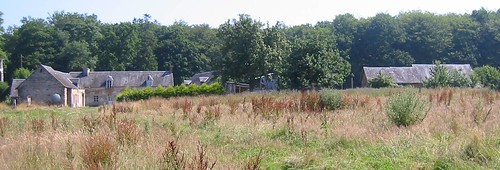 Part of the failed bean experiment from last year.
Part of the failed bean experiment from last year.It's that time of year, and although I'm mostly concentrating on a huge midwinter festivity blowout for the family, it's impossible to ignore the seed catalogues dropping onto the mat along with the cards. It's exciting, and my enthusiasm for finding new varieties to try is only tempered by the logistics of making so many small orders in so many directions. I expect to use at least six different suppliers and have seeds on promise from various seed swappers and friends abroad.
A few days ago we received the Heritage Seed library list and I've been poring over that, anxious to find something that is both worth saving and fits in with my plans for planting next year.
I've been a member (or on a shared membership) of the HSL for many many years and have always felt they were worthy of support for their aims, but as time has gone on I am beginning to develop doubts. As I write this I'm aware that these issues are not limited to the HSL so should be read as a general essay on my feelings about seed saving although I have used them as my example.
Tbere are, I think, three main issues that bother me.
I'm not comfortable with the way material is included in the seed bank. Seeds for preservation are acquired in several ways, sometimes remaindered stock from a certified supplier is donated but other times seeds are offered by members of the public who have inherited them, been saving them for themselves over a period or have brought them back from holiday, the greengrocer's or whatever.
When the provenance is reasonably well documented e.g from a commercial source some confidence can be placed in the identification and purity of the variety to be saved. Several of the older heritage seeds have had learned academia researching them and are supported by this in their identification but the seeds supplied by the general public from private resources are almost entirely anecdotal in their history. I look at the massive variety of tomatoes or beans and cannot but have doubts that some of these seeds are not unique strains but a mish mash of misremembered names, crossed accidents and duplications.
Then we have the actual method of preserving the varieties. I know myself how difficult it is to maintain any particular strain in a amateur garden. With, genuinely, the greatest respect to the Seed Guardians who I am sure try extremely hard to protect the purity of their charges how certain can we be that the actual characteristics of the varieties are being preserved? Indeed, with the poor histories of many types, do we even know what those characteristics are?
Secondly, has the direction of the organisation become muddled? The need to protect diversity in the gene bank is well established for sound scientific reasons even if we ignore the simple joy of revelling in the wonderful multifariousness of nature but by including any and all possible genetic material for general distribution is there a risk of swamping the pool with stuff that might just as well have been left behind? Not all heritage vegetables are delicious. Some are difficult to get right under any conditions. Some are barely improvements on the wild stock and as I said above, some of the varieties offered seem to have been compromised or offer no advantage over other stronger candidates. There is a dichotomy between selection for the gardener and pure scientific rigour and I think the line has become blurred.
Thirdly, the aims of the organisation are to maintain old varieties and distribute them. Weird terms and conditions of use make me uncomfortable but do nothing to actually protect the open source material. I don't want to become responsible for policing a good will system, nor do I want my participation trammelled by vague stipulations, half voiced obligations or unspecified intimations of legal proceedings. Either there is a clear legal contract or the stuff is out there. I do sympathise with organisers and abhor commercial exploitation of private effort but find the unloading of these concerns onto the member's remit to be distressing and unnecessary.
So all in all, I think seed savers are losing their way a bit. Easy to bitch and now I'm a bit more settled again I should probably volunteer to help by growing some varieties for seed and generally trying to support rather than criticise but my feelings on this are really quite strong. We must not become complacent because any one organisation has taken on a general responsibility and we must not allow British good manners to prevent us from identifying problems, getting them corrected and achieving excellence.
Do support the HSL and other seed saving initiatives. Do plan for diversity and variety in your gardens but have some awareness of what you're doing and why it is being done.


